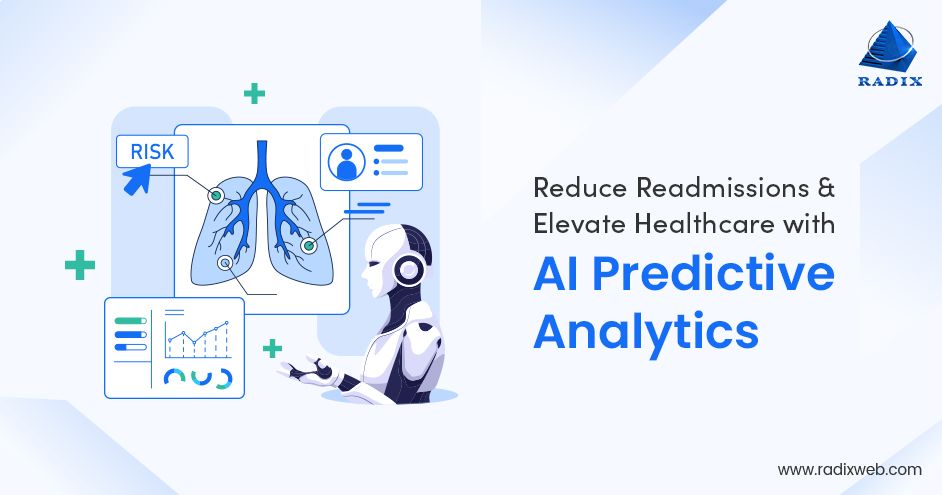
Discover what’s next for AI in healthcare in 2026 - Get Access to the Full Report
DevOps Implementation: Unpacking the Rise of an IT Cultural Revolution


In the software development industry, projects are not only about writing codes. We generally tend to hear about product delivery based on the outcome. Whether we talk about internal projects or working on external one, we always judge the development teams based on the outcomes they provide. Ultimately, we focus on the outcome of the project rather than specific deliverables that matter to the businesses.
However, if we talk about the organization, developers always think that they are paid for changes. The business relies on them for rapid changes. So, it encourages them to create, innovate, and generate as many changes as possible. On the other hand, organizations don’t prefer to see the changes. The businesses keep their eyes on the project delivery services that generate revenue. Business management is encouraged to resist change, because it undermines reliability and stability.
These objectives create a space for individuals, but the organization has to function as a whole. This means, putting all the conflicting agendas aside, the organization has to work as one unit. And, you know, that’s what we call DevOps.
On This Page
Introduction
In recent years, DevOps has turned out to be a booming methodology in software development companies. As per the survey, around 80% of the respondents believed that DevOps is important, and 44% work at organizations with at least one dedicated DevOps employee.
Therefore, we took out some time to talk to our developers about trends and understood some things. Before proceeding further, you must understand that you don’t need to set up a DevOps department between Dev and Ops to implement DevOps. Instead, try to adopt a new culture of Dev and Ops to break the walls between them.
So, let’s walk through the what’s is DevOps mindset in this blog.
What’s DevOps and Why Has It Become Popular?
As the name suggests, DevOps targets to overcome the organizational divide between the team of developers (Dev) and the management – who manages the infrastructure and products (Ops). However, it’s not easy to monitor the outcomes of the product since the software development life cycle gets more complex. Thus, any team member can easily blame other team members for bottlenecks, project delays, or shortcomings in the quality of the product.
Precisely, the team of developers, QA engineers, and other Ops groups may not be aware of each other’s roadblocks or even aim for opposing goals. Well, this creates clouds of unhappiness in the organization.
But as we know, DevOps services serve the best answers to the most critical questions: How can a team of developers deliver the best business value? Can a team of Developers and Operations work together?
If organizations follow the DevOps methodology, they can leverage many benefits, such as faster turnaround time, enhanced deployment frequency, and shorter time between fixes.
So how can DevOps stand up to its expectations?
Do you want to automate your software in a given budget?
Contact DevOps Experts
The Rise of DevOps
To know the mindset of DevOps, we did thorough research and figured out the important information here. So, let’s understand the rise of DevOps.
Knowledge-Sharing Environment
DevOps allow the team to follow the scrum standup meetings. This way, they will be able to know what was done yesterday, what was successful, and how they can improve things. During this meeting, the DevOps team learn many new things and grow eventually. Therefore, everyone on the team should have on-demand access to logs, test servers, tools, and production build.
Automation
Implementing automation processes in DevOps will surely reduce human errors and enhances speed, cutting overhead costs. In DevOps, automation is extended virtually – from development, database, configuration, testing, deployment to monitoring.
One of the best examples of DevOps implementation is Netflix. It follows this methodology to execute code many times per day.
Effective Collaboration
When you collaborate with other team members working on the same project, you get to know their perspectives. Hence, this way, everyone brings a different skill set to the table and discusses their previous work experience.
Therefore, the Ops team can understand the importance of prompt project deployment while developers can identify problems caused by poor code. This way, both teams keep the users in mind while working on the project.
This effective collaboration leads to quality of work, productivity, and prompt project delivery.

Establishing Shared Responsibilities
To bring a culture of shared responsibility, every organization must shift its paradigm. However, the organization should not eliminate the silos between development and operations and support the autonomous teams.
In order to create an effective collaboration, developers and operations teams need to have the privilege to make their own choice and make changes without making any complications in the process.
Here, the first step we can consider to implement shared responsibility is to get support from the top management. Moreover, in DevOps methodology, silos and strict rules are eliminated completely. Therefore, for the better quality of product and timely delivery, every team member is equally responsible.
Continuous Experimentation
The development of DevOps is based on assumptions. The primary key of DevOps implementation is to fail quickly to learn faster through a tighter feedback loop.
Here in the DevOps methodology, the team writes an entire code and bifurcates it in small blocks. After that, they push further to produce it quickly. This way, they can immediately fix the bugs and remove a certain feature, if required.
Once the product launches in the market, users consider some features as useless. Therefore, while developing a product or system, the team must go with a flow and conclude it as a data-driven decision.
Early and Prompt Feedback
In the DevOps methodology, the testing step comes initially. Therefore, at every step, the product is being checked and tested. Hence, the team gets feedback earlier. Then they detect the bugs, fix and retest them. This makes a product bug-free.
In a nutshell, DevOps allows the team to test and check the quality everywhere and every time. Therefore, everyone is bound to provide early feedback.
Since the testers are also involved in the development process, they provide feedback from businesses all the time. This iterative process of frequent integration and testing will help the DevOps team to develop a quality product.
Version control systems allow the team to track the changes of code and corrections. This way, any team member can monitor the changes and resolve the errors quickly. However, this makes the whole teamwork on the same page without having any confusion.
According to a survey among 700 IT professionals, 43% of respondents said that DevOps has boosted innovation in their work. Click To Tweet
Why to Implement DevOps?
DevOps is a methodology that brings the development and operations teams together to work on software development services. This way, the organization can develop and improve the product quickly. Therefore, it has gained popularity among many organizations.
As per the survey by Atlassian, organizations leverage many benefits after the implementation of the DevOps method.

DevOps Implementation Roadmap
1) DevOps Initiative
It’s not easy to introduce DevOps services in the organization as part of your activity. Moreover, investment and human resources are also involved in it. Therefore, the organization has to function accordingly with the development and operations teams. Here, the program manager designs a DevOps strategy and analyzes its implementation.
2) DevOps Strategy Implementation
DevOps is more than any tool or technology when you implement it for the organization. Therefore, you have to develop and implement few fundamental strategies to enable DevOps in the organization.
As a program manager, you have to create an environment that shares a common goal and align teams in that environment. This eliminates the gap of communication and enables robust automation.
However, with DevOps implementation, an organization can leverage the given benefits.
i) Infrastructure-as-a-code and Automation
ii) Continuous Integration
iii) Continuous Delivery
iv) Microservice Architecture
v) Kubernetes Clustering/Container Management System
vi) Rapid Feedback
3) Containerizing
Containerization implementation with the Docker tool ensures software reliability while traversing between processes. In this, the individual parts of the software execute independently without any dependencies. Moreover, container packaging helps Ops teams to manage applications quickly if any changes are required for specific microservices.

4) Integrate Infrastructure Automation with CI/CD Tools
Here, infrastructure automation tools of DevOps such as Ansible, Chef, Puppet, or Kubernetes are integrated with CI/CD tools like Jenkins, Bamboo, or GoCD for effective software deployment and efficient configuration management.
For example, the infrastructure automation tool - Kubernetes allows managing containers for fault tolerance, analyzing their quality, and rolling software updates. Therefore, to develop, test, and deploy new builds into Kubernetes, Jenkins is used.
5) Increasing Test Automation and Aligning QA Team with Development
Test automation is required to achieve a faster delivery with DevOps. However, it’s not necessary to utilize automation testing whenever you test. Here, you can perform manual testing for exploratory, usability, and security.
On the other hand, the development and testing activities should take place to avoid post-release bugs. The best practice you can follow is to conduct automated testing once or twice a day when the application is in the development process. Hence, if any bug is found, developers can resolve it before the final release.
6) Analyzing Application Performance
You can analyze the overall performance issues such as slow response, memory leaks, runtime errors, etc. This provides complete transparency for the DevOps team over the performance.Application performance analysis helps you detect, prioritize, and isolating isolate application defects before users find them. It also lets you quickly find the root causes of the errors using respective application monitoring software, such as Nagios, Prometheus, or Zabbix.
Do you want to implement DevOps in your organization?
Let’s Discuss
Business Advantages of DevOps Implementation
A well-structured DevOps implementation eliminates many problems like siloed functioning operation and dev teams and a lack of understanding of domain from the operation teams.
Businesses can leverage many benefits and enhance their performance and productivity by implementing DevOps.
Enhanced Performance
Generally, a team works on one code block in traditional software development services, decreasing software performance and higher inefficiency.
However, by implementing DevOps, the whole team works towards frequent releases, reduces the rework time, cut-down errors, and enhances time-to-market.

Effective Collaboration
DevOps methodology allows every team member to work within common grounds of transparency and clear feedback. This helps to create a high understanding and trust, which leads to effective collaboration.
Reduces Expenses
Through effective collaboration, DevOps strategy helps in reducing the cost of software development. However, upcoming updates and maintenance are unified into one area for consideration.
Quality Product
The software development process becomes faster, which helps in accommodating the volatile market condition and customer preferences. This helps to eliminate some steps of production and ensure faster delivery.
According to Arrow's report 22 percent of the firms at the highest level of security integration have reached an advanced stage of DevOps evolution Click To Tweet
Why Choose Radixweb For Your DevOps Implementation?
DevOps implementation is a huge organizational shift. There are no risks involved. However, it requires team efforts, dedication, and commitment. So, before you decide to integrate DevOps into your organization, all you need is the latest technologies and team efforts for the DevOps initiative to be successful. The primary benefits your organization can get is delivering software more rapidly with utmost customer satisfaction.
Therefore, every organization should leverage benefits by hiring a renowned DevOps consulting company, Radixweb. Our DevOps team ensures continuous deployment that makes your software application constantly deployment-ready and error-free.
Our team ensures to monitor SLAs along with other key metrics that make the development process hassle-free. Hence, we create business value and deploy high-quality applications by getting the outcome-based measures and monitoring process.
Tweet References
https://www.arrow.com/ecs-media/10538/2019-state-of-devops-report-puppet-circleci-splunk_sml_-1.pdf
Ready to brush up on something new? We've got more to read right this way.





